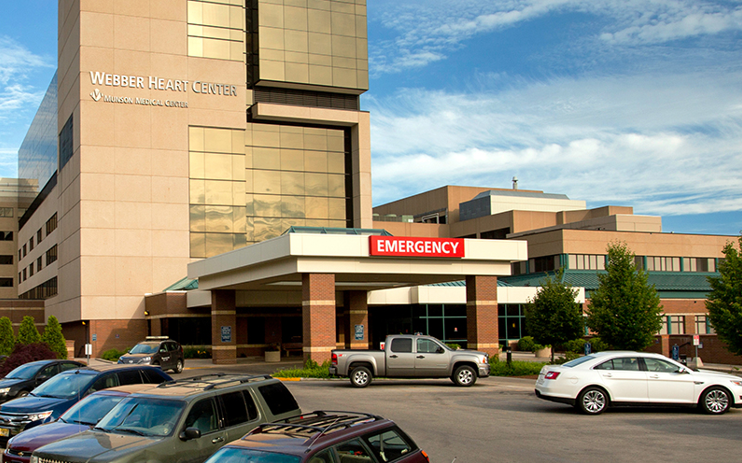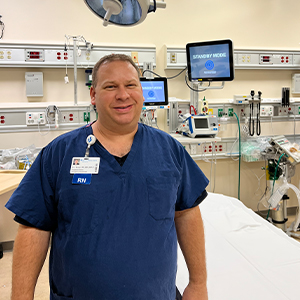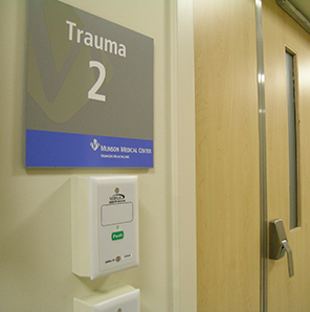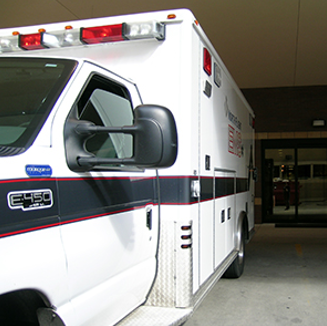What Happens When You Visit the Emergency Department?

In the event of a life-threatening illness or injury, your nearest Munson Healthcare emergency department (ED) is the right place to seek immediate care.
But how exactly are patients seen in the ED?
If you’ve ever been skipped over for someone who arrived after you – whether you’re waiting on a coffee order or a routine appointment – it can feel pretty frustrating. First come, first served is often the prevailing etiquette. But inside your local emergency department, where so many patients arrive with varying degrees of symptoms and conditions, patients must be prioritized (or as we say in the ED, “triaged”) according to their care needs.
Read on as we explore the pivotal role our EDs play and the five levels of triage we use to prioritize care so every patient's needs are addressed in the timeliest, safest manner.
The Role of the Emergency Department

ED staff help stabilize patients experiencing life-threatening symptoms, such as trauma, strained breathing, chest pain, signs of stroke, and more. The goal is to address these emergency symptoms right away before sending patients to the next level of care. This could mean anything from a specialized surgeon to an inpatient unit in the hospital – or even the comforts of home, with instructions to be seen by a primary care provider the following day.
But how do ED staff determine who to treat first? Keep reading to understand the five levels of triage.
The Five Levels of Triage

All EDs use an approved Emergency Severity Index (ESI) to triage patients according to their care needs. The index helps rate each patient on a scale of 1-5 (ESI-1 being the most critical needs).
For instance, a patient with chest pain who’s at risk for a heart attack would be an ESI-2, nearly at the top of the scale. A patient seeking treatment for a rash would be an ESI-5.
So how is your ESI number determined in the ED?
The five levels of triage are based on your symptoms, history, and condition. We obtain these criteria during your initial assessment upon arrival to the ED and use them to determine your severity of injury or illness and assign an ESI. Your ESI plus the number of emergencies being treated in our EDs at any given time help determine when you’ll be seen.
While it may seem a bit unsettling to be assigned a number when you or a loved one is in pain, the process of triaging helps us treat (or, in some cases, save the life of) every patient who passes through the entryway.
For example, someone experiencing rapid heartbeats and breathing difficulties will typically be treated before someone with back pain because they’re at higher risk. However, should the patient with back pain notice their pain is intensifying and/or spreading to other parts of their body, their ESI score will likely increase. That’s why it’s always important to notify your nurse of any changes to pain level, increase in symptoms, and location of pain or symptoms.
Other Factors That Affect Emergency Department Wait Times

Longer wait times probably make more sense now that you understand how triaging works. But there are other unforeseen events at play as well. While you wait to be seen, an ambulance may arrive with a patient who needs immediate care – he/she could be a 911 response or a critically ill patient being transferred from another facility. Another patient may arrive bleeding heavily from a wound.
Each time a new patient arrives or “presents” to the ED, their required level of care can change everything – from the availability of beds to the number of ED staff available. Emergency departments can be as unpredictable as emergencies themselves. Though it can feel frustrating to wait, there’s much more happening behind the scenes than people often realize.
“It’s important for patients to understand that hour-by-hour circumstances and the severity of the patients we are caring for changes,” explains Munson Medical Center Manager of Nursing Services for the Emergency Department Tori Sykes, MBA, MSN, RN, CEN. “We can be seeing patients in a timely way and then see several scenarios that can change that. A trauma could bring critical patients in, or a patient already in the Emergency Department takes a turn for the worse. Also, patients who need to be admitted to the hospital are sometimes waiting for a specialty bed – such as a telemetry bed.”
Everyone experiencing pain or illness wants to be on the road to recovery as soon as possible. At Munson Healthcare, we’re committed to providing safe, high quality care to each and every patient who walks through our doors – whether for a routine check-up or an emergency that just can’t wait. Want to learn more about where to go for the right care? Check out our Munson Minutes below for a quick overview.
Life-Threatening? Call 9-1-1
If you or a loved one are experiencing a heart attack, stroke, or other life-threatening emergencies, always call 9-1-1.

Not sure? Ask-A-Nurse!

Not sure where to go? Click here to determine the best place to seek care – whether it’s a trip to your primary care physician, a nearby walk-in clinic/urgent care, or your local ER. But if you still have questions about symptoms and need advice, call our Ask-A-Nurse line at 231-935-0951. A registered nurse is standing by 24 hours a day. There is no cost or insurance required to use this service.